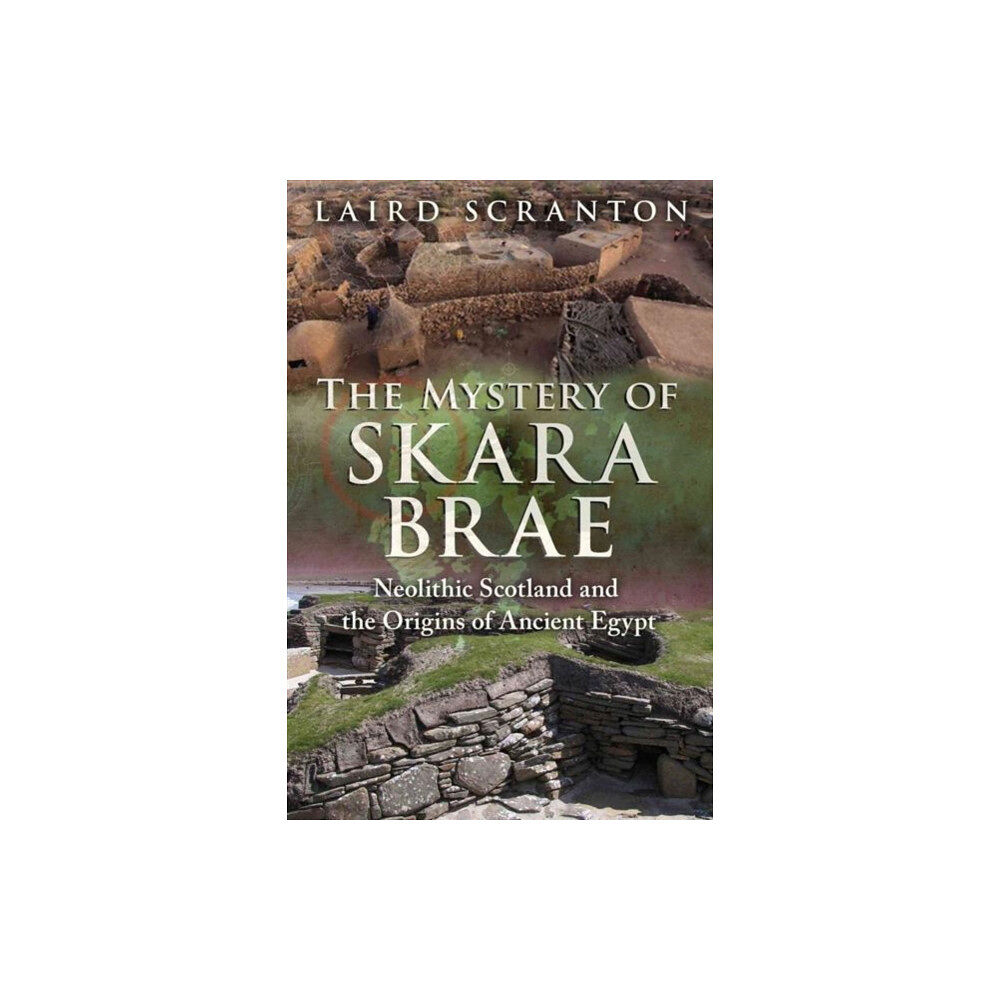- Hem
- Böcker
- Kurslitteratur
- Historia
- The Mystery of Skara Brae (häftad, eng)

The Mystery of Skara Brae (häftad, eng)
In 3200 BC, Orkney Island off the coast of Northern Scotland was home to a small farming village called Skara Brae. For reasons unknown, aft...
209 kr
239 kr
Bara 2 kvar
Skickas inom 2-3 vardagar
Fri frakt över 299:-
Snabb leverans
Alltid låga priser
Produktbeskrivning
In 3200 BC, Orkney Island off the coast of Northern Scotland was home to a small farming village called Skara Brae. For reasons unknown, after nearly six centuries of continuous habitation, the village was abandoned around 2600 BC and its stone structures covered over--perhaps deliberately, like the structures at Gobekli Tepe.
Although now well-excavated, very little is known about the peaceful people who lived at Skara Brae or their origins. Who were they and where did they go?
Drawing on his in-depth knowledge of the connections between the cosmology and linguistics of Egyptian, Dogon, Chinese, and Vedic traditions, Laird Scranton reveals the striking similarities between Skara Brae and the Dogon of Mali, who still practice the same cosmology and traditions they once shared with pre-dynastic Egypt.
He shows how the earliest Skara Brae houses match the typical Dogon stone house as well as Schwaller de Lubicz’s intrepretation of the Egyptian Temple of Man at Luxor. He explains how megalithic stone sites near Skara Brae conform to Dogon cosmology, each representing sequential stages of creation as described by Dogon priests, and he details how the houses at Skara Brae also represent a concept of creation.
Citing a linguistic phenomenon known as “ultraconserved words,” the author compares words of the Faroese language at Skara Brae, a language with no known origin, with important cosmological words from Dogon and ancient Egyptian traditions, finding obvious connections and similarities.
Although now well-excavated, very little is known about the peaceful people who lived at Skara Brae or their origins. Who were they and where did they go?
Drawing on his in-depth knowledge of the connections between the cosmology and linguistics of Egyptian, Dogon, Chinese, and Vedic traditions, Laird Scranton reveals the striking similarities between Skara Brae and the Dogon of Mali, who still practice the same cosmology and traditions they once shared with pre-dynastic Egypt.
He shows how the earliest Skara Brae houses match the typical Dogon stone house as well as Schwaller de Lubicz’s intrepretation of the Egyptian Temple of Man at Luxor. He explains how megalithic stone sites near Skara Brae conform to Dogon cosmology, each representing sequential stages of creation as described by Dogon priests, and he details how the houses at Skara Brae also represent a concept of creation.
Citing a linguistic phenomenon known as “ultraconserved words,” the author compares words of the Faroese language at Skara Brae, a language with no known origin, with important cosmological words from Dogon and ancient Egyptian traditions, finding obvious connections and similarities.
| Format | Häftad |
| Omfång | 208 sidor |
| Språk | Engelska |
| Förlag | Inner Traditions Bear and Company |
| Utgivningsdatum | 2017-01-12 |
| ISBN | 9781620555736 |
Specifikation
Böcker
- Häftad, 208, Engelska, Inner Traditions Bear and Company, 2017-01-12, 9781620555736
Leverans
Vi erbjuder flera smidiga leveransalternativ beroende på ditt postnummer, såsom Budbee Box, Early Bird, Instabox och DB Schenker. Vid köp över 299 kr är leveransen kostnadsfri, annars tillkommer en fraktavgift från 29 kr. Välj det alternativ som passar dig bäst för en bekväm leverans.
Betalning
Du kan betala tryggt och enkelt via Avarda med flera alternativ: Swish för snabb betalning, kortbetalning med VISA eller MasterCard, faktura med 30 dagars betalningstid, eller konto för flexibel delbetalning.
Specifikation
Böcker
- Format Häftad
- Antal sidor 208
- Språk Engelska
- Förlag Inner Traditions Bear and Company
- Utgivningsdatum 2017-01-12
- ISBN 9781620555736
